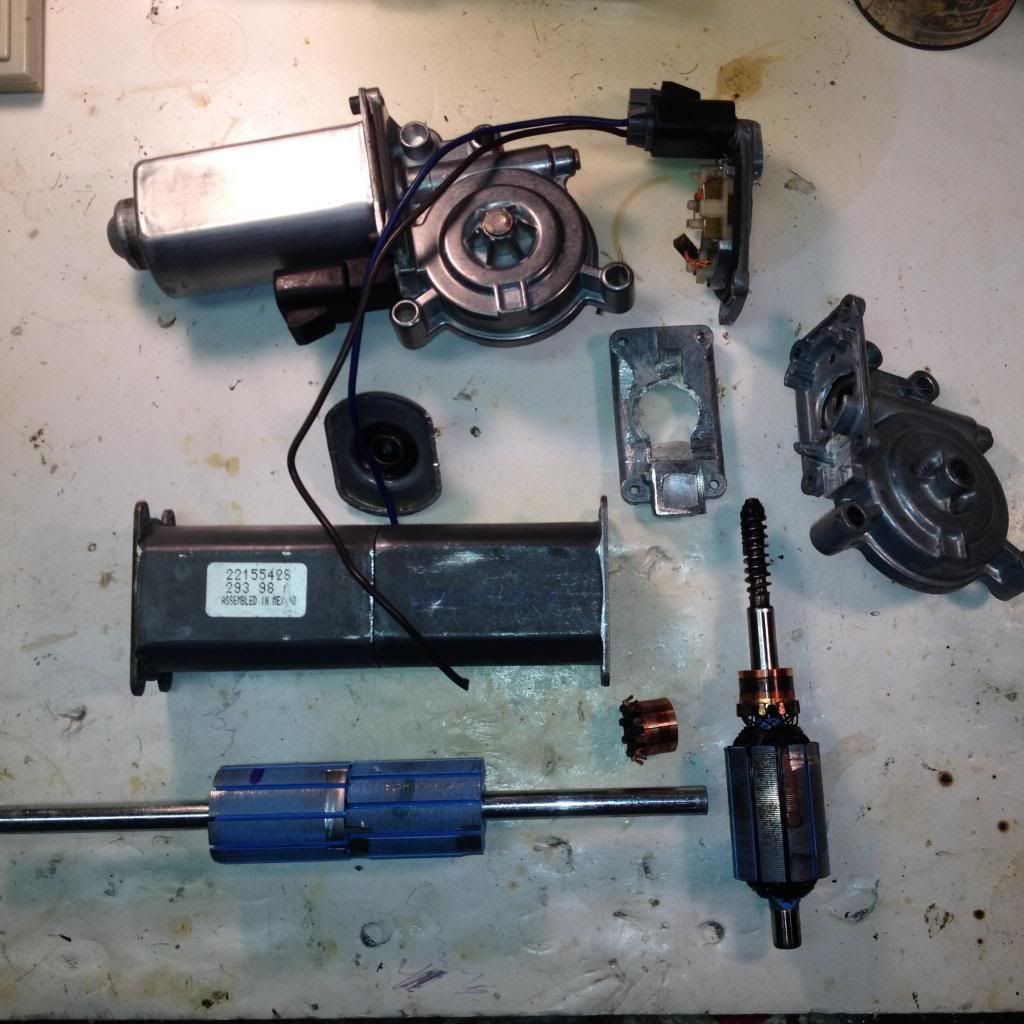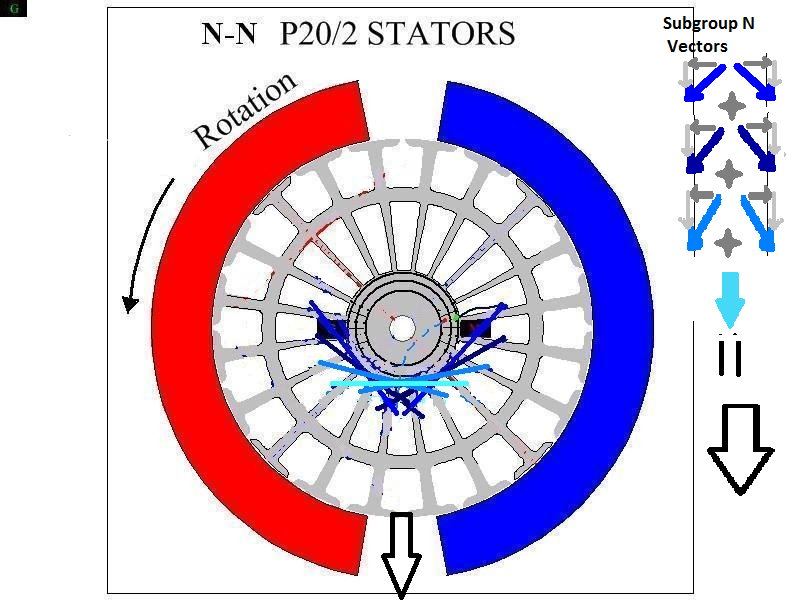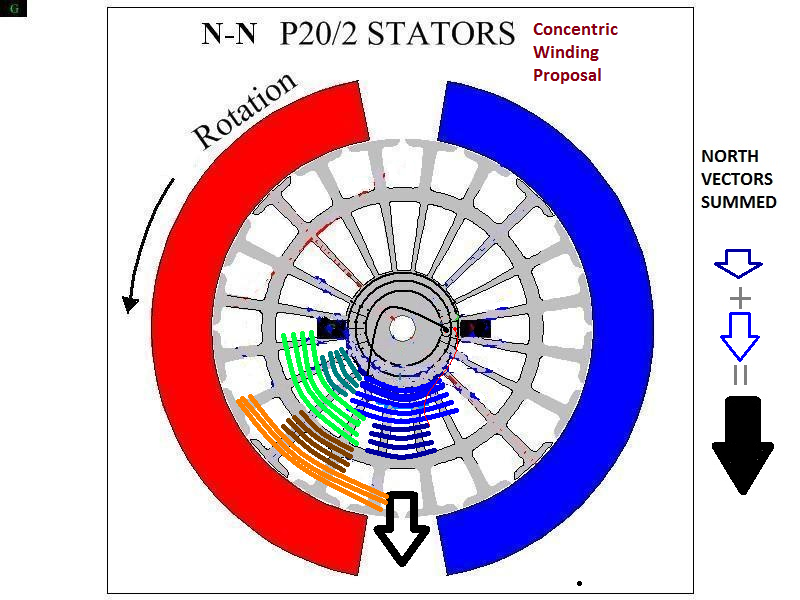Exploded view, top left shows fully assembled original part

Converting to a double rotor takes the guess work out of adding the second brush plate. Just cut off back end of motor and join two bodies. I will arc weld them together, being very careful about keeping the magnets cool as possible.
3/8" stock shaft takes the two armatures. I remove the bushings and use bearings which will be mounted in large steel washers bolted to the front of the wired brush plates. One is shown. It will use the diagram just posted by UFO as it is a ten pole also. The good thing about this pattern is that it seems to use the same brush to stator orientation as the symmetric motor chosen for the conversion. The double rotor will make the motor much more powerful. I will need to add another half inch of rotor, since these sat 1/4" back from the end of the motor. I already have built a 10-pole quad stator with the quad pentagon-Y winding pattern. It ran at 9000 rpm on 12v. They will be fun to compare.




 I don't have time for wandering around in the woods right now and am sorely eager to just to claim the performance of your existing unipolar findings. As soon as I get some really good stuff built, there is a very interesting physics professor in the local university I hope to impress. Maybe he can teach me Heaviside and asymmetric Maxwell equations (once I show them to him maybe). Yeah I kinda need a classroom situation to pound equations into my head.
I don't have time for wandering around in the woods right now and am sorely eager to just to claim the performance of your existing unipolar findings. As soon as I get some really good stuff built, there is a very interesting physics professor in the local university I hope to impress. Maybe he can teach me Heaviside and asymmetric Maxwell equations (once I show them to him maybe). Yeah I kinda need a classroom situation to pound equations into my head. 




Leave a comment: